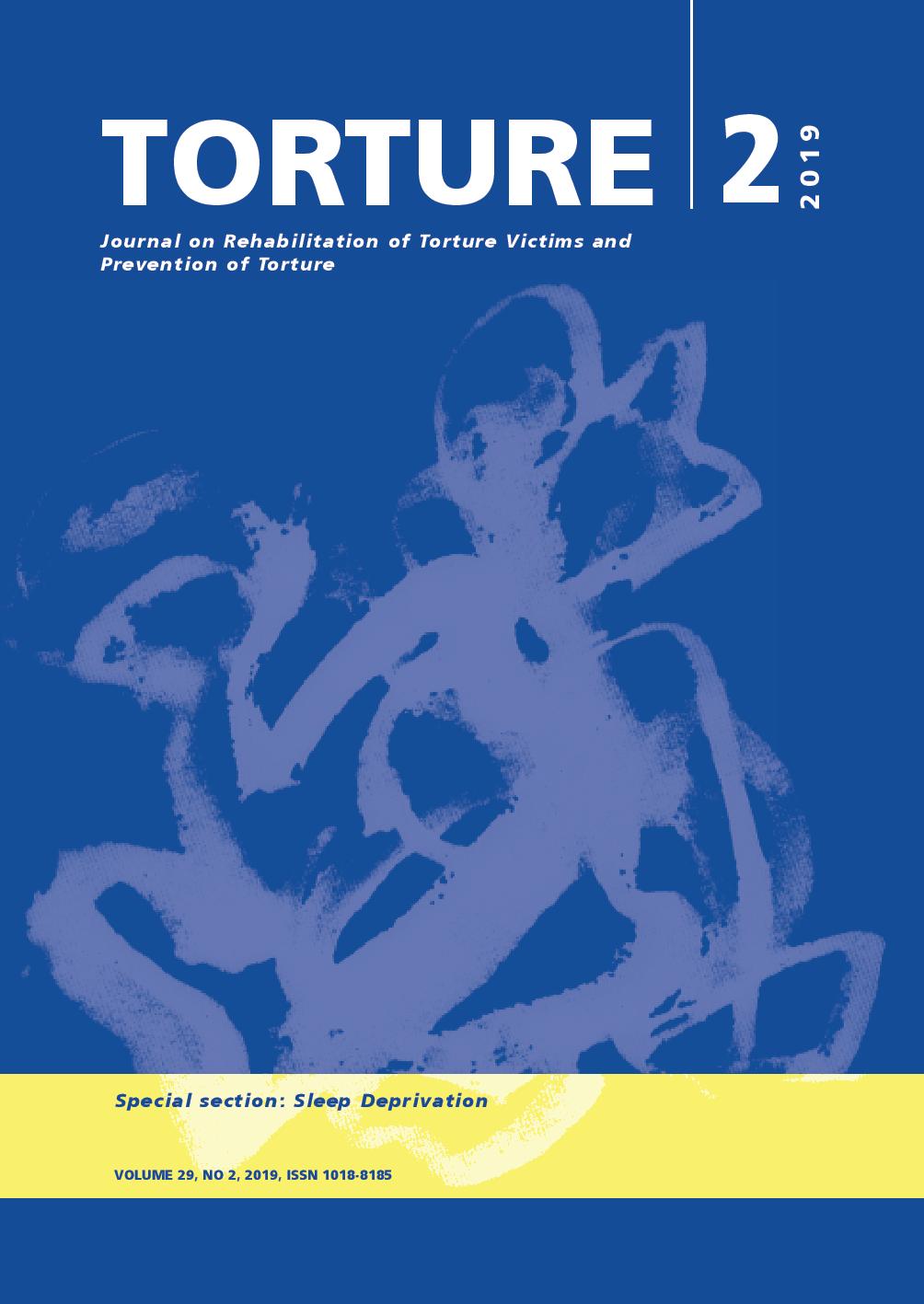Torture and torture practices in Tanzania: Knowledge, attitudes and practice among medical professionals
A baseline study
DOI:
https://doi.org/10.7146/torture.v29i2.112246Keywords:
Torture, Tanzania, Medical professional, Torture knowledgeAbstract
Introduction: Medical professionals have a key role in addressing torture and need an awareness and knowledge of torture in relation to rehabilitation approaches, prevention and international standards. This study was undertaken with the aim of assessing the current knowledge, attitudes and practices of medical professionals in Tanzania, creating a baseline for possible future interventions. Methods: Both quantitative and qualitative data were collected. A cross-sectional survey was carried out using an intervieweradministrated structured questionnaire with 31 questions. Five focus group discussions were held. 386 medical professionals participated in the study representing primary, secondary and tertiary levels of health care in five regions of mainland Tanzania: Arusha, Dar es Salaam, Kigoma, Mara and Mbeya.
Results: Around 95% of all professionals acknowledged the existence of torture in Tanzania, but only 7% could correctly identify six different acts as being actual acts of torture according to the definition of the UN Convention Against Torture and Other Cruel, Inhuman or Degrading Treatment or Punishment. Less than 15% were aware of relevant international standards like the Istanbul Protocol and the Mandela Rules. Up to 57% perceived that torture could be acceptable under certain circumstances. About 68% of all professionals reported to have encountered torture victims. The majority (82.9%) saw themselves as competent in the management of torture victims, but only 22% had received training specifically focusing on torture and its consequences. Most were interested in learning more on the subject. Conclusion: While medical professionals may be aware of theexistence of torture in the country and report encountering torture victims in their daily work, both the professionals’ skills and attitudes with regards to torture require development to intensify the workagainst torture in Tanzania. Intervention strategies should target training in medical schools and in-service training for medical professionals at all levels within the healthcare system.
References
Agnihotri A. K., Purwar B., and Jeebun N. (2007). Awareness of issues related to torture among medical students in Mauritius. Indian Journal of Medical Ethics, (4)3. https://doi.org/10.20529/IJME.2007.053
Alayarian A. (2009). Children, torture and psychological consequences. Torture Journal, 19(2). 145–56.
Aon M., Sungusia H., Brasholt M., Van Den Bergh B., Modvig J. (2018). Voices of torture survivors in Tanzania, a qualitative study. Torture Journal, 28(3). https://doi.org/10.7146/torture.v28i3.111199
Bean J., Ng D., Demirtas H., and Guinan P. (2008). Medical students’ attitudes toward torture. Torture Journal, 18(2), 99–103.
Benninga Z., Steiner-Birmanns B., Arbel R., Abu Akar F. and Aboo Di M. (2017). Recognition and treatment of law enforcement violence against detainees and prisoners: A Survey among Israeli physicians and medical students. Torture Journal, 27(1). https://doi.org/10.7146/torture.v27i1.26533
Carinci A. J., Mehta P., and Christo P. J. (2010). Chronic pain in torture victims. Current Pain and Headache Reports, 14(2), 73–79. https://doi.org/10.1007/s11916-010-0101-2
Dubin K., Milewski A. R., Shin J. and Kalman T. P. (2017). Medical student attitudes towards torture, Revisited. Health and Human Rights, 19(2), 265–277.
Eisenman D. P., Keller A. S., and Kim G. (2000). Survivors of torture in a general medical setting. Western Journal of Medicine 172 (5): 301–4. https://doi.org/10.1136/ewjm.172.5.301
HRW (2013). Tanzania’s Victims of Torture. Human Rights Watch. Think Africa Press, 26 June 2013.
Kanchan T., Kumar T. S. M., Kumar G. P., and Yoganarasimha K. (2007). Torture and Role of Medical Practitioners. JK Science, 9(1), January-March 2007.
LHRC & ZLSC (2017). Tanzania Human Rights Report 2017. Legal and Human Rights Centre and Zanzibar Legal Services Centre, Tanzania, 2017.
McColl H., Bhui K., and Jones E. (2012). The role of doctors in investigation, prevention and treatment of torture. Journal of the Royal Society of Medicine 105(11), 464–71. https://doi.org/10.1258/jrsm.2012.120100
Mollica R. F. (2011). Medical best practices for the treatment of torture survivors. Torture Journal, Vol 21 No 1: 8–17.
Sobti J. C., Chapparawal B. C. and Holst E. (2000). Study of knowledge, attitude and practice concerning aspects of torture. J Indian Med Assoc, 98(6), 334-5, 338-9.
Tashakkori A. and Teddlie C. (1998). Applied social research methods series, Vol. 46. Mixed methodology: Combining qualitative and quantitative approaches. Thousand Oaks, CA, US: Sage Publications, Inc.
UN (2004). Istanbul Protocol: Manual on the Effective Investigation and Documentation of Torture and Other Cruel, Inhuman, or Degrading Treatment or Punishment. Rev. 1. Professional Training Series, no. 8/rev. 1. Office of the United Nations High Commissioner for Human Rights, Geneva, 2004.
UN (2009). Consideration of reports submitted by states parties under article 40 of the covenant. Concluding observations of the Human Rights Committee. United Republic of Tanzania. UN Human Rights Committee, Ninety-sixth session Geneva, 13-31 July 2009.
United Republic of Tanzania (1977). The Constitution of the United Republic of Tanzania of 1977.
Verma S. K. and Biswas G. (2005). Knowledge and attitudes on torture by medical students in Delhi. Torture Journal, 15(1), 2005.
WMA (1976). WMA Declaration of Tokyo – Guidelines for physicians concerning torture and other cruel, inhuman or degrading treatment or punishment in relation to detention and imprisonment. World Medical Association, 1979.
Downloads
Published
How to Cite
Issue
Section
License
We accept that some authors (e.g. government employees in some countries) are unable to transfer copyright. The Creative Commons Licence Attribution-NonCommercial-NoDerivatives 4.0 International (CC BY-NC-ND 4.0) covers both the Torture Journal and the IRCT web site. The publisher will not put any limitation on the personal freedom of the author to use material contained in the paper in other works which may be published, provided that acknowledgement is made to the original place of publication.


